Digital marketing helps brands connect with their audience through various online platforms. With almost 30% of business taking place online (a figure that’s growing by the year), it’s more important than ever to lean into digital marketing if you want to stand out and generate sales.
This year, 46.2% of marketers are planning to increase their digital marketing spend in a bid to grow revenue, build trust, and secure more online sales. Learn more about how digital marketing works, why it is important and how to create a digital marketing strategy to help grow your business.
What is digital marketing?
Digital marketing is the act of promoting a brand, product, and/or service through paid and organic online campaigns. It encompasses nearly any online promotion of your ecommerce business.
Spending on digital advertising worldwide is expected to hit $667 billion in 2024. The most common marketing goals for businesses include increased brand awareness, sales, engagement, leads, and revenue—all of which can be achieved with a digital marketing strategy.
Digital marketing vs. traditional marketing
Digital marketing is carried out online or via digital channels, while traditional marketing tends to use offline channels, like billboard ads and TV campaigns. Digital marketing is often more cost-effective than traditional advertising methods, since you can employ free or low-cost internet tools and media. There’s no hefty price tag that comes with full-page magazine spreads or limited placements on a billboard.
Digital marketing for B2B
Business to business (B2B) digital marketing is the act of promoting your products or services to other businesses or organizations. The most common digital marketing strategies for B2B brands are email marketing and social media marketing. The rise of AI has encouraged brands to think outside the box in 2024 and experiment with multiple strategies, like automated personalization and influencer marketing.
Digital marketing for B2C
Business to consumer (B2C) digital marketing promotes a product or service to a consumer rather than another business. Ecommerce brands usually fall into this camp, using tactics like social media marketing, paid advertising, and search engine optimization (SEO) to capture the attention of shoppers who are researching products.
Why is digital marketing important?
Today’s competition means it’s impossible to stand out without using multiple strategies to attract and nurture potential shoppers. Digital marketing can be the catalyst for getting your products in front of the right people, but that’s not the only benefit. Here’s why digital marketing is important.
Grow your business
More conversions mean more revenue. Digital marketing not only attracts shoppers but educates them on why they should buy from you and ultimately guides them toward a sale.
A thought-out digital marketing plan will give you key insights into how well your campaigns are performing (use a marketing plan template to get started). Make sure you set goals and track your KPIs to determine how well your efforts are paying off.
Increase return on investment (ROI)
Tracking and analyzing the results of your digital marketing strategy will help you identify where you’re having the most success. You can use this information to optimize your efforts, decrease the cost of new customer acquisition, and make sure you’re putting your money where it matters.
Improve your global impact
It can be tempting to throw spaghetti at the wall and see what sticks. However, a successful digital marketing strategy requires an understanding of your audience so you can serve them the right content on the right platforms at the right time.
Organic strategies like social media marketing and SEO can help you stand out against big-name brands that have millions of dollars to invest in advertising, and give you a competitive edge globally.
13 types of digital marketing
A well-rounded digital marketing strategy encompasses multiple channels. Generally speaking, most brands use a combination of social media, email, and SEO, among others. The specific channels that work for your brand largely depend on your target audience, your budget, and your business goals.
Here are 13 popular and effective digital marketing channels to promote your online business.
1. Social media marketing
Social media marketing allows you to engage with existing customers and build relationships with new ones. Social media is a collective term for the major platforms like TikTok, Facebook, and Instagram, as well as niche sites like Houzz and Twitch. Some of the main social media marketing platforms to check out include:
You can create organic social posts on each of these networks. Organic social posts are updates you post to your brand’s page without any paid promotion. It’s typically best to go with a mix of engaging and promotional content with organic posts, skewing more toward engaging content. Too many self-promotional posts may lead to unfollows.
Perfume brand Dossier posts relatable content on TikTok to connect with its followers and demonstrate its personality.
2. Messaging marketing
Messaging marketing lets you reach shoppers in their text messages or Facebook Messenger inboxes. It’s particularly effective for building deeper relationships with existing customers and providing perks to your best shoppers. But be careful—your customers’ inboxes are sacred, so treat them with care. Only share necessary updates, relevant offers, or content that’s really valuable.
Toilet paper brand Who Gives a Crap sends replenishment reminders to its customers via text message so they never run out. This is a great way to encourage ongoing purchases and stay front of mind.

3. Email marketing
Email is a prominent digital communication tool for businesses. And according to research, email usage is on the rise. About 4.37 billion people use email, a number predicted to rise to 4.73 billion by 2026. However, there’s increasing dissatisfaction with branded emails—which means there’s more opportunity for the brands that do it well.
You can use email to send a mix of promotional and non-sales content—newsletters with helpful content about how to use your products, exclusive discounts for your email list, early announcements, and access to special sales and affiliate programs.

Use email marketing software to build customer profiles and segment your subscriber list so you can create personalized email campaigns. With Shopify Email, you can create email marketing campaigns and send them to your customer base through Shopify itself. Emails are fully customizable and support direct linking to your products to increase click-throughs and conversions.
4. SEM and SEO
Search engine marketing (SEM) and SEO marketing aim to increase your website’s visibility through online search engines. SEM refers to paid tactics, while SEO refers to non-paid efforts.
To fire up your SEM, you can run pay-per-click (PPC) display ads and Google Shopping Ads through the Google Ads dashboard, targeting specific keywords for queries in your chosen locations. Your budget may vary depending on your goals and keyword competition, but there’s always an option for every budget.
LOVEBYT, which sells cruelty- and chemical-free toothpaste, uses SEM in its digital marketing strategy. It has bid on the keyword “organic toothpaste” so it appears at the top of search pages for queries with those words.
Shoppers who type that keyword into Google will see the brand’s ad as their top result—and, with the top ad receiving 2% of all clicks, there’s a good chance consumers will click through.
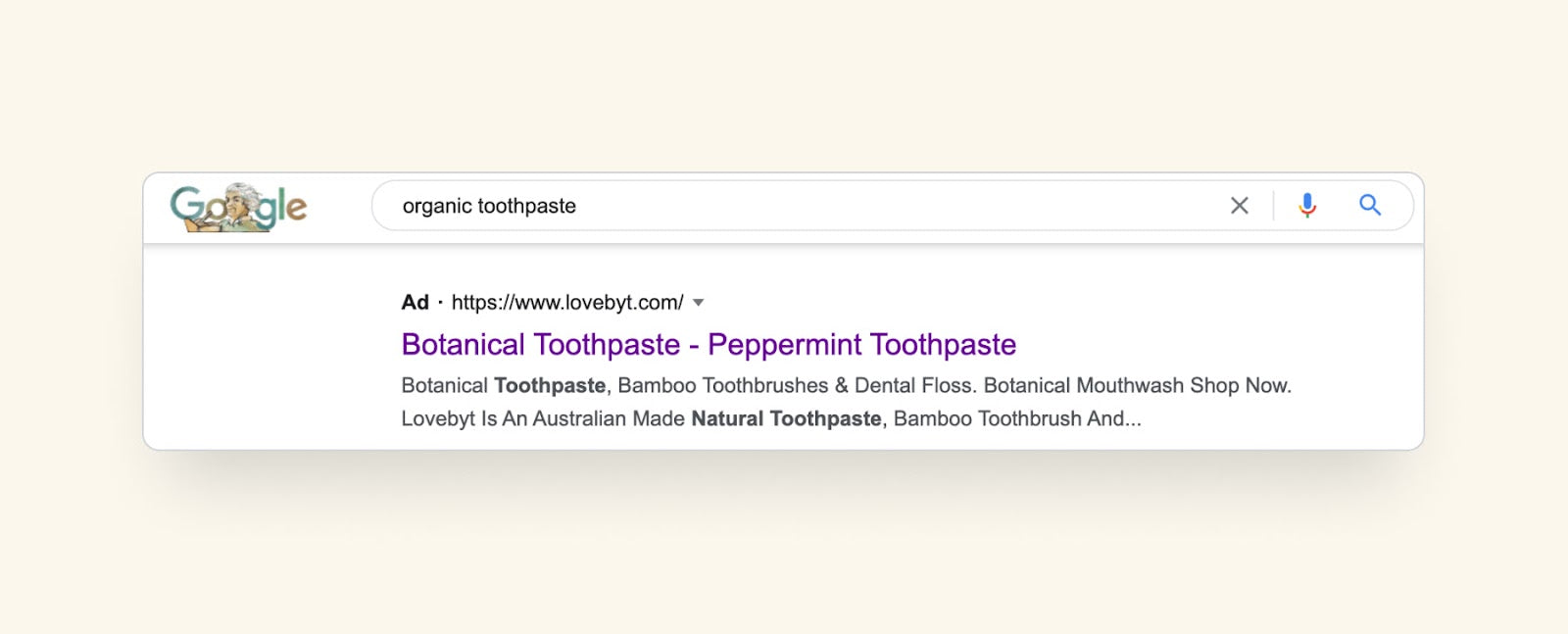
5. Native advertising
Native advertising refers to a type of paid advertising in which the ad matches the look and feel of its host platform. This form of digital marketing might be a social media post, a sponsored post on a website, or a recommendations widget.
The idea isn’t to trick people into thinking the ad is an organic piece of content. Instead, the purpose is to maintain a frictionless user experience.
Here, the content recommends products that help keep food fresh longer, which complements the article. Product recommendations are a common form of native advertising.

6. Pay-per-click
Pay-per-click (PPC) is an advertising model where you pay for every click on your ad. It’s also known as the cost-per-click (CPC) model and is most prominent on Google, Facebook, and Instagram.
Much like SEM, you set your budget and create the ad visuals. However, while SEM shows your ad to people who have searched for a specific keyword, PPC ads are shown to consumers who match your target audience.
There are multiple ad types to choose from and features that let you guide shoppers to the promoted product page or allow them to buy directly through the social media platform.
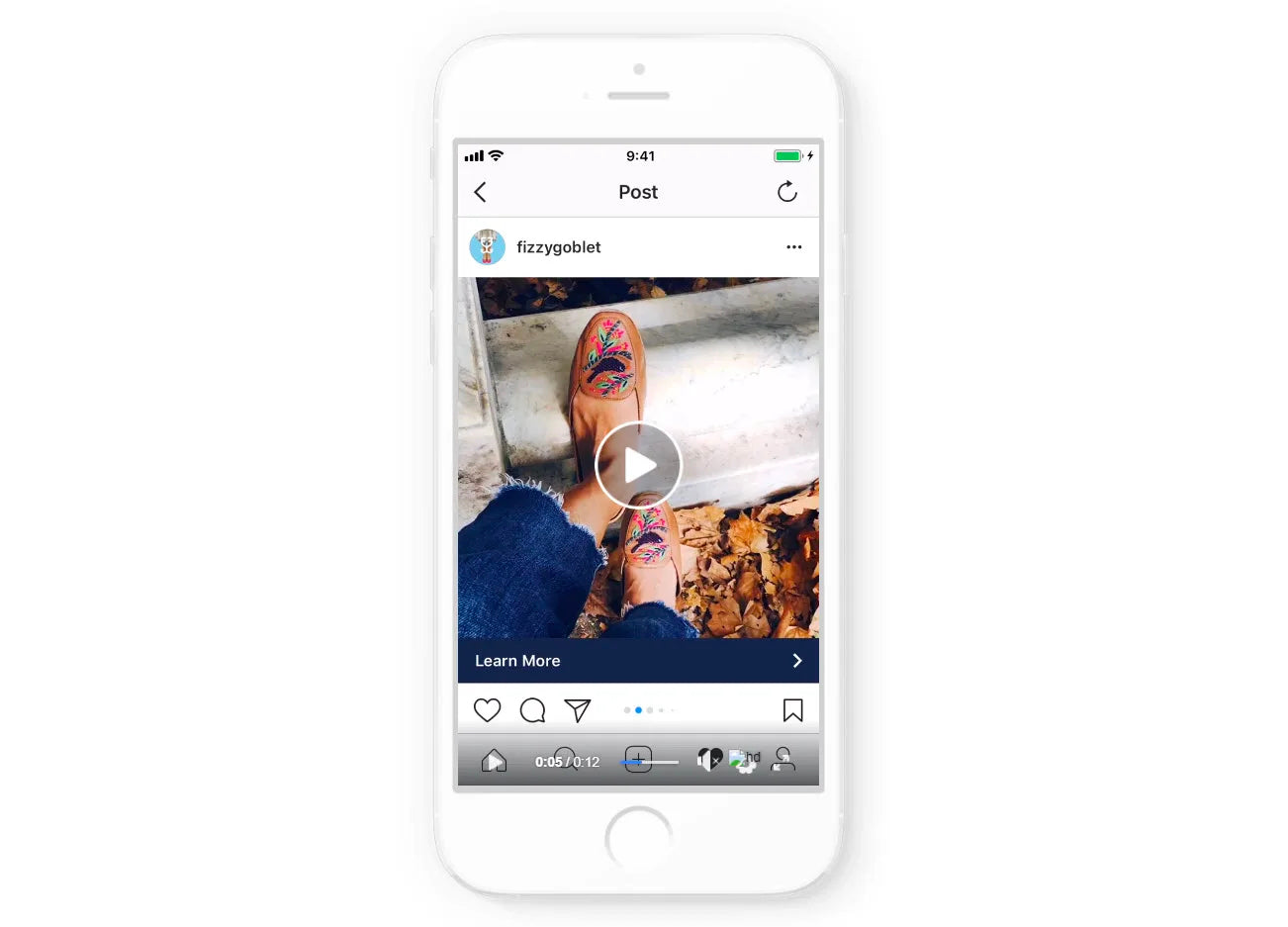
7. Content marketing
Content marketing is when businesses create or curate content, usually via a blog. In fact, more than half of marketers use blogs in their digital marketing strategy. Content is effective for building relationships with new and existing customers, generating awareness about your brand and products, boosting SEO, and establishing authority in your chosen niche.
Skin care brand Beauty Pie has a blog that shares insights and answers questions to help shoppers make a purchase.

8. Affiliate marketing
Affiliate marketing allows consumers and influencers to earn a commission for marketing and selling a company’s products. This is most commonly seen in tandem with influencer marketing, where the influencer gets a cut every time someone buys a product through their unique link.
This form of digital marketing is a great way to get in front of new audiences and encourage your best customers to promote your physical and digital products. Use our creator archetype guide to identify the best influencers for your brand.
In this example, when a shopper clicks through from this roundup post to the Amazon product page and makes a purchase, the affiliate will get a slice of the commission.
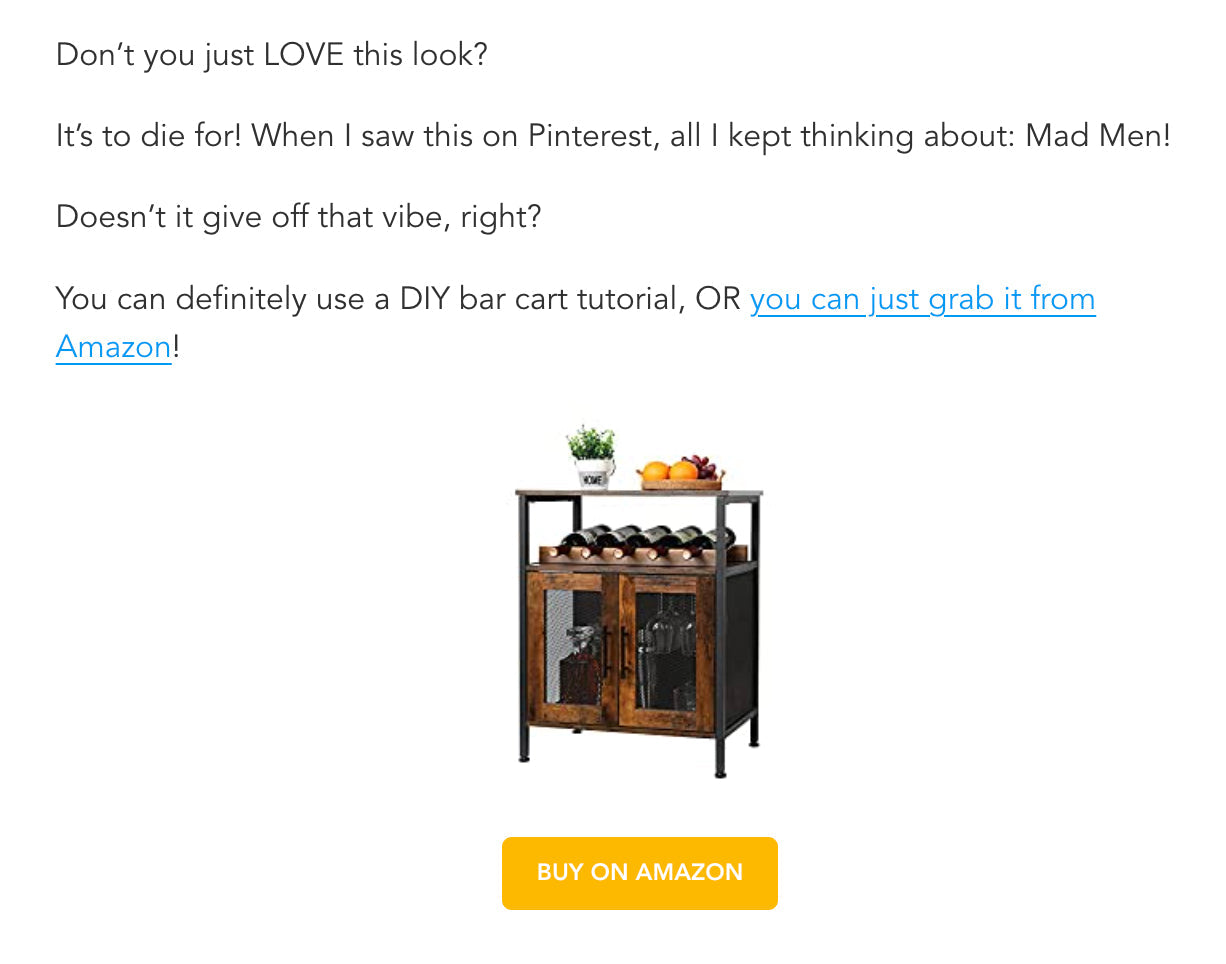
9. Marketing automation
Marketing automation is when you use technology in your digital marketing strategy to trigger automated actions from your marketing platforms. Marketing automation could be limited to a single platform in your tech stack or involve a combination of tools via integrations. The Shopify App Store, for example, has lots of marketing automation apps you can add to your digital commerce site.
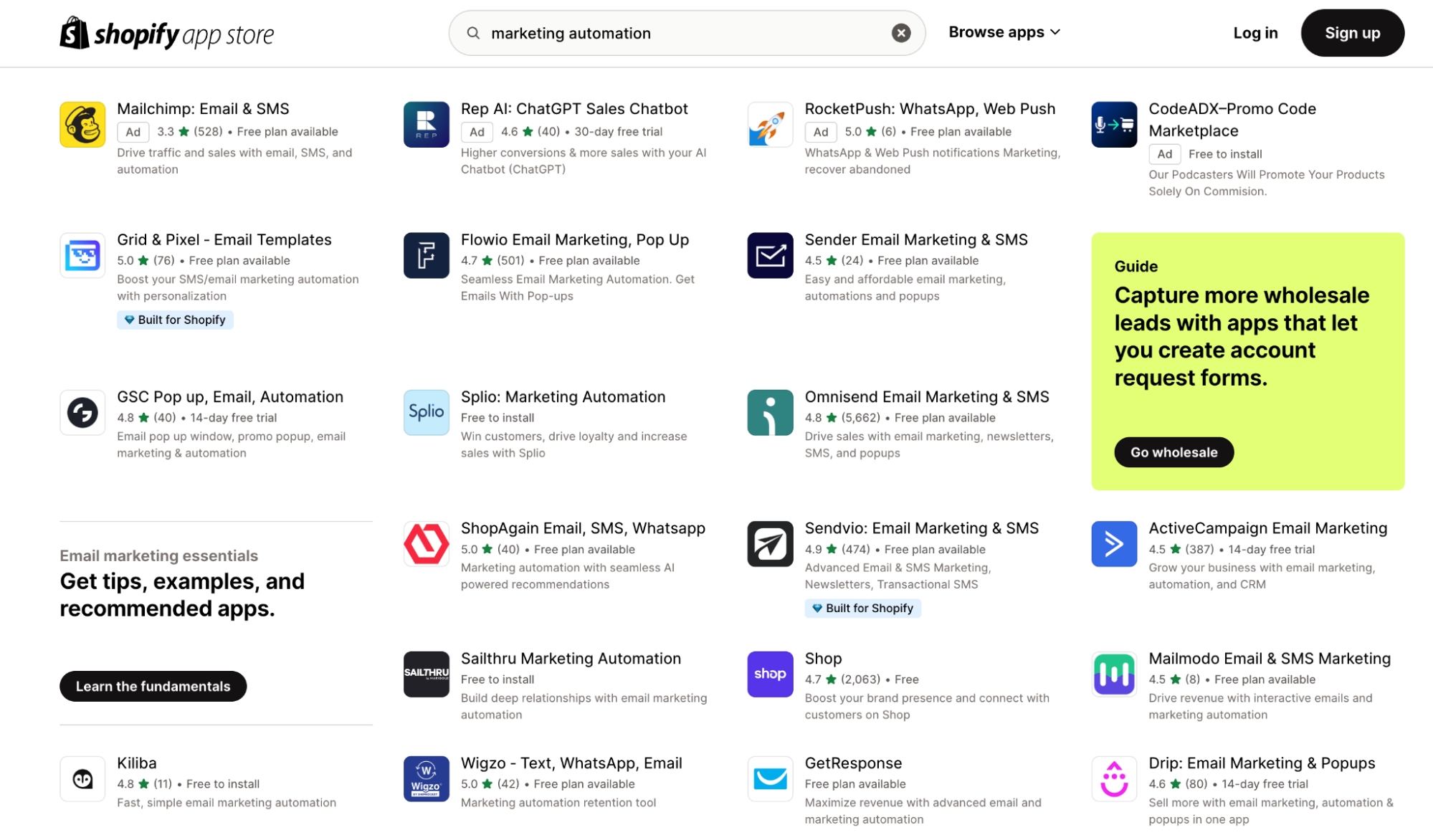
You can also create marketing automation campaigns directly from your Shopify dashboard. One example of marketing automation most ecommerce brands can leverage is post-purchase automation.
Depending on your product and the purchase, you can use post-purchase communication as a way to nurture customer relationships and cross-sell other products through personalized recommendations. Then, you can check the results and optimize the campaign through the marketing analytics in your Shopify dashboard.
10. Remarketing
Remarketing, or behavioral retargeting, is when you market to people who have already interacted with your brand in some way. You can set up retargeted marketing campaigns that are informed and targeted based on your audience’s previous behavior.
Maybe you launched a collection of artist-designed mugs for your home goods business? A few months after the first project, you then collaborated with a different artist on a new mug design. You can remarket to the people who purchased your first artist-designed mug, knowing they already have an interest in this type of product.
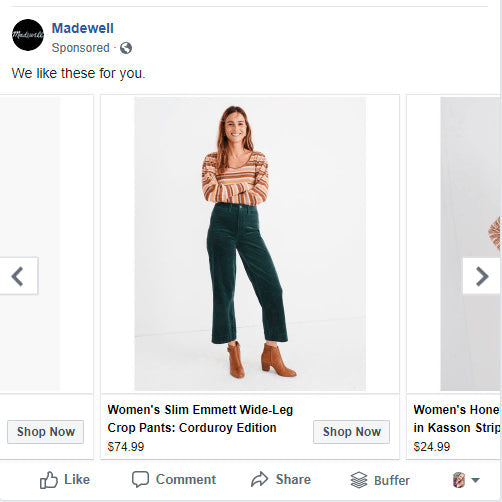
11. Sponsored content
Sponsored content is similar to native advertising in that a brand pays for an ad that resembles a platform’s editorial content. Often this form of digital marketing is an article or blog post, but it can also refer to sponsored social media posts.

12. Influencer marketing
Influencer marketing involves partnering up with relevant social media accounts and promoting your brand or products to their audience. This often goes hand-in-hand with affiliate marketing because most collaborations will use unique affiliate links for each influencer, but it can also be a great way to generate a buzz around an upcoming launch.
Olipop partners with influencers on Instagram to showcase its latest flavors.
13. AI digital marketing
AI digital marketing is the process of using artificial intelligence and automation to improve your digital marketing efforts. It includes creating automated, personalized workflows that deliver relevant content to different audience segments. It also includes using generative AI to create blog posts and social media captions, and analyzing data to improve your future campaigns.

What does a digital marketer do?
A digital marketer’s main tasks are creating and executing strategies to connect with their audience online. As well as coming up with content and campaign ideas, digital marketers need to be able to analyze campaign data to identify areas of improvement. For example, you’ll need to iterate creatives for a social media ad campaign, determine the audience, create the content, and track the performance of the campaign.
How to create a digital marketing strategy
Your ecommerce marketing strategy hinges on a few key factors, including who you want to reach, what message you want to send, and how you’re going to deliver that message. Here’s a step-by-step guide to creating your strategy.
1. Set digital marketing goals
What do you want to achieve with your digital marketing strategy? This can be an overall goal, like “Increase sales across your online store by 30%,” or you can choose goals for individual campaigns, like “Grow our Instagram follower count to 10,000.”
Before you start thinking about what content you’ll create and which channels you’ll share it on, consider what your end goal is. This will help you track your efforts and ensure the strategies you implement are leading you toward your business objectives.
2. Identify your target audience
Consider who you want to reach—25-year-old digital entrepreneurs in New York or working moms who struggle to find time for self-care? The more you hone in on your target audience, the easier it is to know which platforms you can reach them on and what type of message they prefer to receive.
To increase your chances of success, create buyer personas. You can come back to these to ensure you’re using the right language and focusing on the right platforms. Here are the steps:
- Check your analytics. Use Google Analytics or your sales metrics to see who your best customers are.
- Identify patterns in your best buyers. Determine what key characteristics your best customers have. For example, they might all fall into a specific age range or they might all have similar job roles.
- Use demographic and psychographic data. Don’t just focus on age and location. Dive deeper into their interests, challenges, and dreams.
- Create your personas. Bring this information together in a couple of buyer personas that match your ideal audience. Include a name for each persona and their key characteristics, and highlight the best marketing channels to reach them on.
3. Choose the right channels
Different audiences hang out on different channels. Some prefer TikTok and Instagram, while others prefer to receive communication via email or text message. When creating your buyer personas, determine the most effective platforms to market on and include these in your strategy.
It’s tempting to try and deliver content on every single platform, but you might find yourself spread too thin by doing this. Instead, pick three to five channels that work best for your brand and audience, such as email, SMS, Instagram, and TikTok.
4. Create a content plan
Once you’ve identified your audience and your core platforms, you can move on to content creation. At this point, you should have a good understanding of what your audience wants to see online and a solid strategy for how you’ll reach them.
Consider a variety of different content formats, such as:
- Instagram Stories and Reels
- Welcome sequences and automated email marketing
- TikTok and YouTube videos
- SEO blog posts
- Downloadable content, such as ebooks and reports
- Influencer and user-generated content
- Social media ads
Test out a few different content formats to see what your audience responds to best and incorporate your best-performing content types into your strategy.
5. Measure and analyze results
Track the performance of your digital marketing efforts by regularly checking your analytics. Download social media analytics reports, track conversions, and measure engagement to see what kind of marketing works best.
When you analyze your results like this, you’ll be able to see what works and what doesn’t so you can tweak your strategy moving forward.
Digital marketing examples
Dove: Digital marketing campaign
Cosmetic brand Dove is renowned for its emotive digital marketing strategy that ties seamlessly with its brand values.
Over the years, Dove has incorporated user-generated content, hashtag campaigns, and social videos to raise awareness of body issues and promote its products.
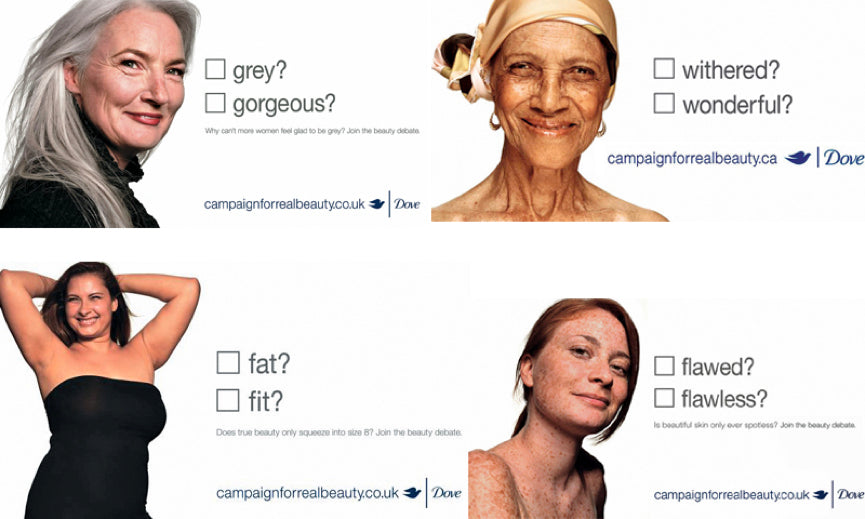
Samsonite: SEM
Global luggage brand Samsonite used SEM practices to bring its advertising online. It started by getting a deeper understanding of what its end users were looking for so it could target the right keywords and promote the right message in search results.

Apple #shotoniphone: Social campaign
Apple encouraged its customers to share pictures taken on their iPhones in response to the backlash against the phone’s camera capabilities. The winning photos were displayed on billboards around the world.
Buoy: Email marketing automation
Wellness brand Buoy uses email marketing to offer discounts and exclusive deals to its best customers. Along with creating a sense of urgency with countdown timers, it encourages its audience to share the brand and its products with their friends and family through word-of-mouth marketing.

Campus Protein: SMS marketing
Campus Protein sends personalized abandoned cart text messages to shoppers to bring them back to the site. When a shopper responds to the email, the brand’s AI chatbot responds with relevant information, links, and discounts to drive sales.
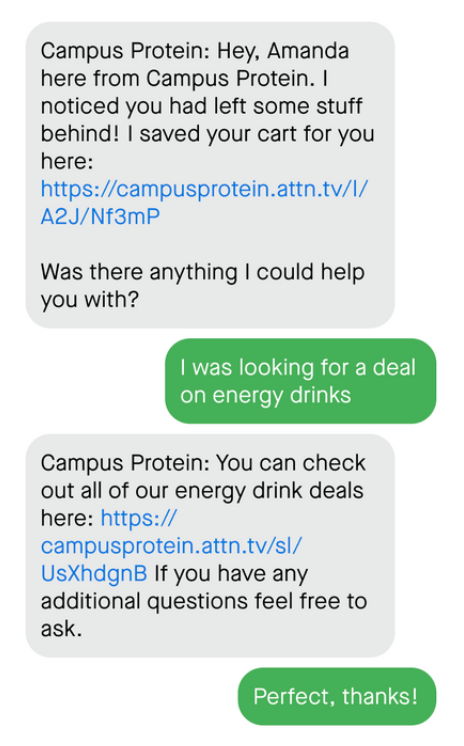
Kickstart your digital marketing
Shopify has built-in marketing tools you can use to get started with your digital marketing campaigns.
There are tools for audience targeting, email marketing, SEO, paid social ads, and more.
Plus, you can improve your marketing efforts with actionable insights that reduce guesswork and make campaigns better over time. With Shopify, you can use one platform to find and sell to the right shoppers, wherever they are.
Digital marketing FAQ
What are the latest trends in digital marketing?
The latest trends in digital marketing center around AI. Brands are using advanced AI technologies to create content, automate communication, and analyze data. Additionally, brands are focusing on building stronger, longer-lasting relationships with their customers through personalized marketing and nurturing strategies.
How big is the digital marketing industry?
The digital marketing industry reached $363.05 billion in 2023 and is set to increase by 13.1% between now and 2032, reaching $1.09 trillion.
How has digital marketing evolved?
Digital marketing strategies are constantly evolving to meet new consumer expectations and to align with the latest technologies. In the past, digital marketing was limited to basic email communication and static websites. New technology has expanded the possibilities to include automated, personalized communications that connect with consumers on an individual level.
What are the common challenges of digital marketing?
- Generating qualified leads
- Measuring ROI
- Creating engaging content
- Understanding and meeting customer needs
- Staying on top of latest trends and technologies
- Tying big-picture objectives to a set budget
- Promoting and distributing content
How do you become a digital marketer?
- Acquaint yourself with the fundamentals of digital marketing.
- Learn how to use digital marketing tools.
- Build a portfolio that includes a variety of digital marketing campaigns.
- Reach out to your network to find digital marketing opportunities.
- Stay up to date with the latest digital marketing trends.
How is AI changing the digital marketing landscape?
AI is reducing the number of repetitive manual tasks in digital marketing. It can increase efficiency by automatically tailoring ads to meet the needs of the target audience, automating tedious tasks, and predicting customer behavior for enhanced campaigns. Digital marketers can use AI to generate content, run campaigns on autopilot, and analyze the performance of different activities.
Source link
What Is Digital Marketing? Examples, Types, and FAQ (2024) #Digital #Marketing #Examples #Types #FAQ
Source link Google News
Source Link: https://www.shopify.com/ca/blog/digital-marketing